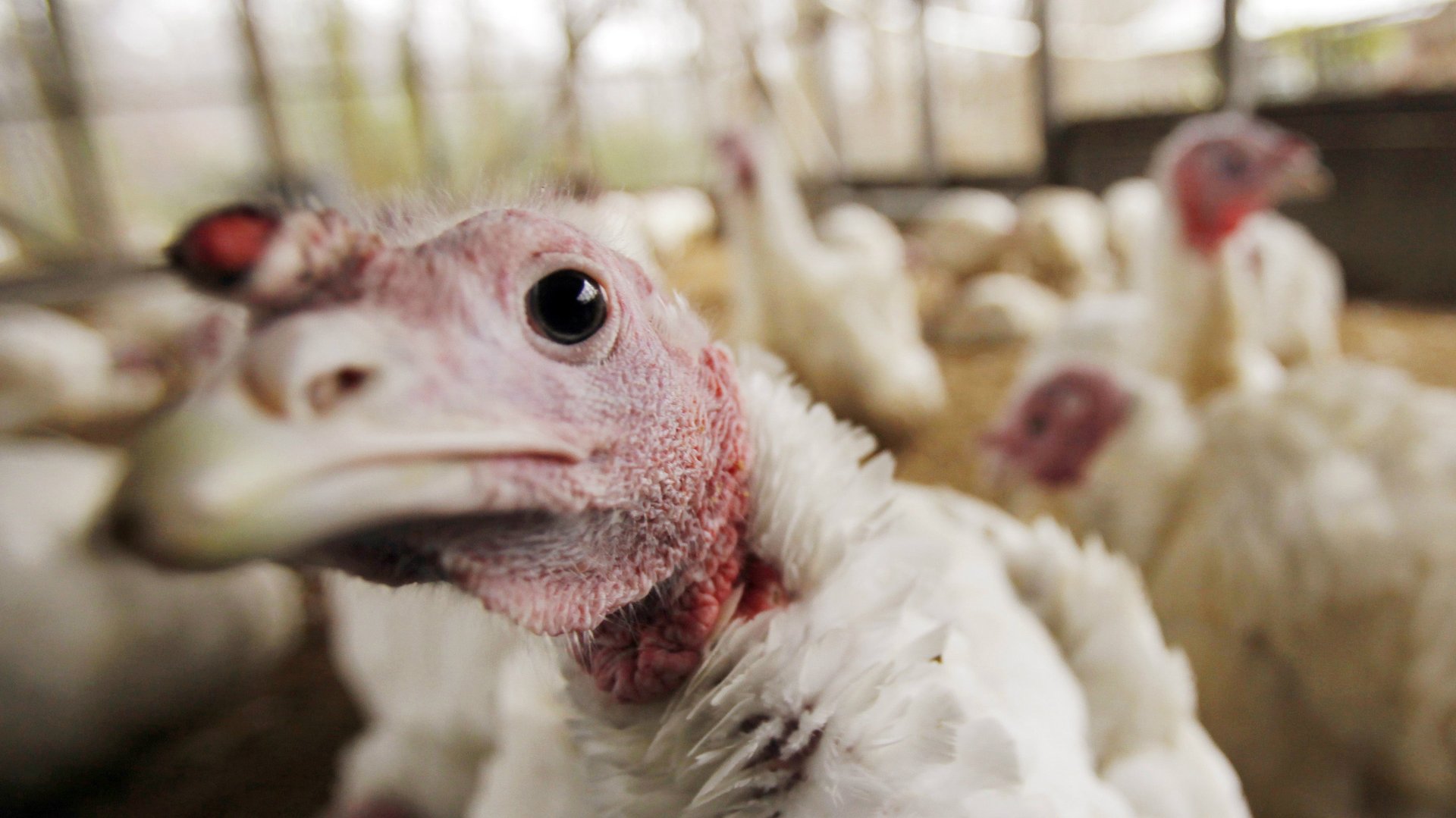The turkey origin story: Your ticket for shutting down Thanksgiving if things get too political
If The New York Times is correct, 2016 may be one of the most partisan and contentious Thanksgivings (paywall) in decades, with relatives chafing against one another’s political persuasions at dinner tables all around the US this Thursday (Nov. 24).


If The New York Times is correct, 2016 may be one of the most partisan and contentious Thanksgivings (paywall) in decades, with relatives chafing against one another’s political persuasions at dinner tables all around the US this Thursday (Nov. 24).
There are simple strategies for navigating a heated conversation successfully. But if things start to go sour, you may need a nuclear option, a story to tell that promises to cast any Thanksgiving feast into a yawning, deafening silence.
That story is the origin tale of the Thanksgiving turkey on your table.
Before we go any further, remember that old maxim: With great power comes great responsibility. Though the following details are all about food, the decision to share them should be exercised with caution.
Our story begins on the farm.
Prior to the 1960s, turkeys mostly bred naturally—typically one male (or tom) to about eight or nine hens. But technological advances in artificial insemination created something of a fowl sexual revolution, and radically upped that ratio to about 25 hens per tom.
On tom farms, breeding is as much an art as it is science. As US Department of Agriculture (USDA) physiologist Murray Bakst once told it to me, the process begins with a pliable pair of gloves and a barn filled with toms, each selected for his advantageous physiological traits.
A brave farm worker steps into the barn and wades into the flock.
“There are some of the toms that will come up to them and purr,” Bakst told me. “The toms will rub up against their legs and they’ll gobble. If you asked if they know why they’re there, a lot of them do.”
Next, the farm worker will reach down and begin “rubbing the tush” of individual birds. According to the Merck veterinary manual, this stimulates the phallus, which “is followed quickly by pushing the tail forward with one hand and, at the same time, using the thumb and forefinger of the same hand to apply pressure in the area and to ‘milk’ semen from the ducts of this organ.”
Still thinking about the election now?
The semen is collected in vials and mixed with a “semen extender,” a solution that protects the samples for safe transport to the hen barns. There, an artificial insemination crew inseminates the females.
And so it goes, the beginning of life for the vast majority of turkeys that wind up on dinner tables during the holiday. It’s considered a loathsome practice by animal welfare advocates, who bemoan the lack of government oversight of welfare issues on farms. (While much of American turkey production is subject to USDA oversight, there are swaths that remain under the eye of industry alone. The operation of tom farms fits that category.)
A big piece of the argument against current welfare standards ties back to American tastes for breast meat, and to the poultry industry’s preference for fast-growing birds.
“The birds have been bred to be so huge that the tom cannot lift his body enough to mate with the hen,” says Paul Shapiro, the vice president of policy for the Humane Society of the United States. “Many of them have trouble just walking.”
Shapiro adds, “They’re still prisoners in their own bodies. The modern turkey has been bred to suffer.”
But then, haven’t we, too, in this last year-and-a-half of relentless media coverage and personal feuding over the recent US election?
It’s a lot to cope with, especially when you’re around relatives, who can make Thanksgiving trying even during non-election years. But no matter where you are on the political spectrum, just remember: Election talk doesn’t have to consume Thanksgiving, not when someone can wield a sobering turkey-origin story that promises the disinfecting power of silence.